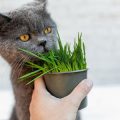Understanding Your Cats Nutritional Needs
Ensuring your cat enjoys a long and healthy life begins with understanding their unique dietary requirements. Unlike dogs, cats are obligate carnivores, which means they rely on nutrients found specifically in animal flesh. In the UK, feline nutrition standards are guided by organisations such as the British Small Animal Veterinary Association (BSAVA) and the Pet Food Manufacturers Association (PFMA). These bodies help define what constitutes balanced nutrition for cats, considering both essential nutrients and local feeding practices.
Cats require a specific balance of proteins, fats, vitamins, and minerals that differ from other pets. Protein is especially crucial, as it provides the amino acids necessary for tissue repair and energy. Taurine, an amino acid found only in animal tissues, is particularly important for cats’ heart health and vision. Deficiency in taurine can lead to severe health problems. Furthermore, cats need certain fatty acids like arachidonic acid, which they cannot synthesise themselves.
| Nutrient | Role in Cat Health | UK Recommendations |
|---|---|---|
| Protein | Supports growth, maintenance and energy | High-quality animal protein sources are recommended |
| Taurine | Vital for heart function and vision | Must be included in all commercial cat foods |
| Arachidonic Acid | Maintains skin, coat and reproductive health | Sourced from animal fats; plant-based diets are unsuitable |
| Vitamins (A, D, E) | Regulates metabolism and immune system | Pre-formed vitamin A required; not from plant carotenoids |
| Minerals (Calcium, Phosphorus) | Bone development and nerve function | Balanced ratios are essential; excess or deficiency can cause problems |
The UK places a strong emphasis on providing complete and balanced diets through commercially prepared foods that meet FEDIAF (European Pet Food Industry Federation) guidelines. Homemade diets should only be considered with veterinary guidance to avoid nutritional imbalances. By prioritising these nutritional standards, you help ensure your feline companion receives all the nutrients necessary for optimal wellbeing.
Commercial Cat Food: Wet vs. Dry Options
When it comes to feeding your cat, British pet owners are often faced with the choice between wet and dry commercial cat food. Both options are widely available in UK supermarkets and pet shops, but each has its own advantages and disadvantages. Understanding these can help you make an informed decision that aligns with British standards for balanced feline nutrition.
Wet Cat Food
Wet cat food, typically sold in tins or pouches, contains a high moisture content, which can be beneficial for cats who don’t drink much water. This type of food is often more palatable for fussy eaters and can aid in urinary tract health by helping your cat stay hydrated. However, wet food usually costs more per serving and can spoil quickly if left out.
Dry Cat Food
Dry cat food (kibble) is convenient to store and serve, tends to be less expensive, and helps keep your cat’s teeth cleaner due to its crunchy texture. However, it contains less moisture, so it’s important to ensure your cat always has access to fresh water. Some cats may also find kibble less appetising compared to wet food.
Comparison Table: Wet vs. Dry Cat Food
| Feature | Wet Food | Dry Food |
|---|---|---|
| Moisture Content | 70–85% | 8–12% |
| Palatability | High | Moderate |
| Shelf Life Once Opened | Short (hours) | Long (weeks) |
| Cost | Higher | Lower |
| Dental Health Support | Minimal | Good |
Selecting Reputable UK Brands
When choosing a cat food brand in Britain, look for products meeting the standards set by the Pet Food Manufacturers’ Association (PFMA) and ensure they are labelled as ‘complete’ foods. Trusted UK brands such as Royal Canin, James Wellbeloved, Whiskas, Felix, and Harringtons offer nutritionally balanced options suitable for various life stages and dietary needs. Always check ingredient lists for meat as the primary source of protein, avoid excessive fillers, and consult your vet if your cat has special dietary requirements.
![]()
3. Decoding Pet Food Labels and UK Regulations
Understanding how to read cat food packaging is essential for British pet owners who wish to provide balanced nutrition for their feline companions. In the UK, strict regulations govern what information must appear on pet food labels, ensuring transparency and safety. Here’s a guide to help you interpret the key elements and quality markers on cat food packaging:
Legal Labelling Standards in the UK
Cat food labels in the UK are regulated by The Food Standards Agency (FSA) and must comply with EU retained law post-Brexit. The following information is mandatory on all commercial cat food:
| Label Element | Description |
|---|---|
| Name of the Product | Clearly identifies whether it is “complete” or “complementary” cat food. |
| Composition | A list of ingredients in descending order by weight. |
| Additives | Any added vitamins, minerals, or preservatives must be listed with specific names or E-numbers. |
| Analytical Constituents | Nutritional breakdown including protein, fat, fibre, and ash content as percentages. |
| Feeding Guidelines | Recommended portion sizes based on your cat’s weight and age. |
| Best Before Date | The date until which the product remains fresh and safe to consume. |
What to Look For: Quality Markers
- Complete vs Complementary: Choose products labelled “complete” for daily meals—they meet all nutritional requirements as set by FEDIAF (European Pet Food Industry Federation) standards still adopted in the UK.
- Named Protein Sources: Look for foods listing specific meats (e.g., chicken, salmon) rather than generic terms like “meat and animal derivatives.”
- No Artificial Additives: Prefer recipes free from artificial colours, flavours, or preservatives—these are often marked as “natural.”
- Batch Numbers and Manufacturer Details: Reputable brands display batch codes and contact information for traceability and accountability.
Deciphering Ingredient Lists
The first few ingredients listed make up the majority of the food. High-quality cat foods will list named meats first, followed by beneficial grains or vegetables if included. Be wary of vague terms such as “animal fats” or “derivatives,” which indicate lower transparency about ingredient sourcing.
Quick Reference Table: Red Flags vs Quality Markers
| Red Flags | Quality Markers |
|---|---|
| “Meat derivatives” as primary ingredient | Named meat sources (e.g., chicken breast) |
| Lack of feeding guidelines | Clear feeding recommendations based on weight/age |
| No manufacturer contact details | Transparent company information provided |
Selecting the right cat food involves more than just picking an appealing package; it requires careful reading of labels, an understanding of regulatory standards, and attention to detail regarding ingredient quality and transparency. By following these guidelines, British cat owners can ensure they’re making informed choices that support their pets’ health and wellbeing.
4. Home-Prepared Diets: Risks and Recommendations
Many cat owners in the UK are drawn to the idea of preparing home-cooked meals for their feline companions, believing that fresh ingredients may offer superior nutrition. While this approach allows for control over ingredient quality and can cater to specific dietary needs, it also presents significant challenges in meeting a cat’s complex nutritional requirements.
Potential Nutritional Gaps
Cats are obligate carnivores, which means they require certain nutrients found only in animal products. Essential nutrients such as taurine, arachidonic acid, vitamin A, and vitamin D3 are not adequately supplied by plant-based foods or improperly balanced recipes. Common mistakes in home-prepared diets include:
| Nutrient | Role in Cat Health | Common Deficiency Issues |
|---|---|---|
| Taurine | Heart function, vision, reproduction | Cardiomyopathy, blindness |
| Vitamin A | Skin health, immune function | Poor coat condition, susceptibility to infections |
| Arachidonic Acid | Inflammatory response, skin integrity | Poor wound healing, skin disorders |
The Role of Supplements
Even the most well-intentioned home-cooked diet often falls short unless carefully formulated with the right supplements. In the UK, reputable pet nutrition suppliers offer commercial supplements specifically designed for cats; however, these should only be used under professional guidance. Over-supplementation or imbalance can be just as harmful as deficiencies.
When to Consult a UK Veterinary Nutritionist
If you are considering a home-prepared diet for your cat, it is strongly advised to seek guidance from a veterinary nutritionist registered with the Royal College of Veterinary Surgeons (RCVS). These professionals can assess your cat’s specific needs and help create a recipe that meets British nutritional standards. Regular health checks and blood tests are also recommended to monitor your cat’s wellbeing on any non-commercial diet.
Key Recommendations for Safe Home Feeding
- Never rely solely on online recipes without professional review.
- Avoid raw diets due to risks of bacterial contamination and nutrient imbalances.
- Weigh ingredients accurately and follow portion guidelines set by experts.
Summary Table: Pros and Cons of Home-Prepared Diets (UK Context)
| Pros | Cons |
|---|---|
| Control over ingredients Ability to avoid allergens Tailored to individual needs |
Difficult to balance nutrients Risk of deficiencies/excesses Time-consuming preparation |
If you wish to explore home cooking for your cat, always prioritise their health by seeking expert advice and adhering to recognised British nutritional guidelines.
5. Human Foods: What’s Safe and What’s Not
It’s not uncommon for British pet owners to want to share a bite of their meal with their feline companions. However, many foods found in a typical UK household can be harmful—or even toxic—to cats. Understanding which British staples are safe and which should be avoided is key to keeping your cat healthy.
Safe British Foods for Cats (in Moderation)
Certain plain, cooked human foods can serve as occasional treats for cats. These should never replace a balanced cat diet but can be shared sparingly:
| Food | Safe? | Notes |
|---|---|---|
| Cooked Chicken (plain, skinless) | Yes | Good protein source; avoid seasoning |
| Cooked Fish (cod, haddock, salmon) | Yes | Boneless and unseasoned only; oily fish in moderation |
| Cooked Eggs | Yes | Rich in protein; must be fully cooked |
| Cucumber or Peas | Yes | Mild vegetables; small amounts only |
Foods Commonly Found in British Kitchens That Should Be Avoided
| Food | Why It’s Unsafe |
|---|---|
| Milk & Dairy Products | Most adult cats are lactose intolerant—can cause stomach upset and diarrhoea |
| Onions & Garlic (including gravy and stuffing) | Toxic to cats; can cause anaemia even in small quantities |
| Chocolate & Sweets | Theobromine is highly toxic; sweets may contain xylitol (also dangerous) |
| Bones (cooked or raw) | Risk of choking or causing internal damage |
| Alcohol (beer, wine, spirits) | Even small amounts are extremely toxic to cats |
Avoid Feeding Table Scraps
British favourites such as roast dinners, fish and chips, or sausage rolls often contain salt, fats, onions, or other additives unsafe for cats. Even if your cat begs, it’s best to stick to foods specifically formulated for feline nutrition.
If in Doubt, Leave It Out!
If you’re ever unsure whether a food is safe for your cat, consult your vet before sharing. Remember: what’s healthy for humans isn’t always suitable for felines.
6. Addressing Special Dietary Needs
Every cat is unique, and their dietary needs can change based on age, health status, or life stage. In the UK, veterinary guidance places great emphasis on tailoring feline nutrition to individual requirements, ensuring that each pet receives optimal care throughout its life.
Feeding Kittens
Kittens require higher levels of protein, fat, calcium, and certain vitamins to support rapid growth and development. British vets recommend specifically formulated kitten food until at least 12 months of age. It’s crucial to offer small, frequent meals using high-quality commercial diets that meet FEDIAF (European Pet Food Industry Federation) standards.
Nutrition for Senior Cats
As cats age, their nutritional needs shift. Senior cats may be less active and prone to weight gain or dental issues. Diets lower in calories but rich in digestible protein help maintain lean muscle mass while supporting kidney health—a common concern in older felines. Wet foods may also aid hydration and be gentler on ageing teeth.
Special Considerations by Life Stage
| Life Stage | Key Nutritional Focus | Recommended Approach (UK) |
|---|---|---|
| Kitten | Growth, immunity, bone development | High-protein kitten food; multiple small meals daily |
| Adult | Weight maintenance, energy balance | Portion-controlled feeding; regular monitoring |
| Senior | Kidney health, joint care, hydration | Senior-specific diets; increased wet food intake |
Cats with Health Conditions
Certain health problems—such as diabetes, kidney disease, or urinary tract issues—require tailored diets under veterinary supervision. For instance:
- Diabetic cats: Low-carbohydrate, high-protein diets help regulate blood sugar levels.
- Cats with renal disease: Diets lower in phosphorus and protein may slow kidney decline.
- Urinary health: Specialised foods promote dilute urine to reduce stone formation risk.
If your cat has a diagnosed condition, always consult your vet before making dietary changes. Many UK practices work closely with pet owners to provide prescription diets that support specific medical needs, enhancing both quality and length of life for affected cats.


